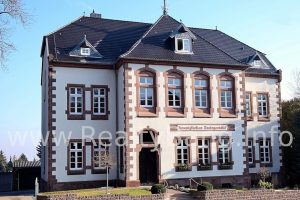Foreign nationals can buy a property with the approval of local authorities, which will usually be granted. However, the four largest islands of Estonia (Hiiumaa, Muhu, Saaremaa, and Vormsi, which form their border with the Baltic Sea) and some listed areas to purchase property for non-EU citizens living on the Russian border Are off-limits.
Foreign citizens cannot buy property in some areas of Estonia.
The typical home buying process
The process of buying and registering a property usually takes about 65 days, when you identify your property.
By law, the notary is required to have documentation at each stage. The purchaser and seller can prepare the documents themselves for review by a notary, but it is more common for a notary to prepare them. The buyer must be present in-person to sign all documents.
The first step is to verify that the property is registered with the Estonian Land Register and that the seller is the owner. You also need to check that the property is free from mortgages, such as mortgages and any unpaid bills or other debts.
A pre-purchase contract is prepared based on the buyer’s offer to the seller, which may be oral. Once signed and notarized, the contract is immediately binding under Estonian law, with no opt-out period.
It commits the buyer and seller to the sale and establishes terms such as payment amount and date. At this stage, the buyer must deposit between 10% and 20% of the value of the property and pay a tax of 0.4%.
Once paid, the notary prepares a transfer of ownership of the real estate, which is signed by both parties. The buyer then pays the stamp duty (0.3% to 0.5%) and applies the notary land register to register the transfer of ownership. Estonia does not have property deeds.
After paying a 0.25% fee in the land register, the process is complete and the property belongs to you. The transfer will be automatically published in the official state gazette, but it does not affect your ownership.
Find properties to buy
The sources listed above may also prove useful for those who are searching for properties to purchase within the rental section.
Specific advice for ex-pats
If you depend on a mortgage from abroad, your lenders may be accustomed to more layers of bureaucracy, which Estonia offers. They may therefore require documents that are not formally present in Estonia, such as a survey report or a formal document that declares freedom from encroachment. If this is the case, then your notary can probably help gather an ad hoc document that will satisfy them.
Mortgage for foreign nationals
If you are an EU citizen or have been granted indefinite residency, you will qualify for a home loan in the same way as most Estonian citizens.
However, a mortgage given to a foreigner cannot be more than 50% mortgage at 7% interest, but usually 80% at 2% to 4% interest. Your bank may require income in euros and larger payments – ie 40% instead of the minimum 20%. They will evaluate how likely you are to make the property your full-time residence. Some may require that if you leave the country permanently, or your residence is canceled, the loan will have to be repaid in full.
Rental property in Estonia
There is no minimum period for rent in Estonia, with some properties being advertised for daily rent. There may be a lease for a fixed or unspecified position. Fixed-term leases can usually expire when the term has expired. If you want to leave earlier then you will probably have to give three months’ notice. Both parties may agree to a shorter notice period, but not now. Unspecified leases You can leave at any time with an agreed notice period.
Many rentals are made without a lease. In this example, the tenant still has statutory protection under Estonian law, but you want to know who your landlord is and what you can expect from them. So, if you are offered a purely oral contract, ask for it in writing, and confirm who is signing.
When you sign your lease, you will usually have to pay a deposit and one month’s rent in advance. Once you leave the property, you should get the deposit back, deducting the cost of any damage. To make your payment by standing order you will need an Estonian bank account. Typically, it will be set up so that your rent ends at the beginning of each month.
Your lease will probably only be in Estonian. Ask for a translation, and make sure you are ready to get one, even if you are initially told that it is not possible. The lease should include a description of the property, including address, size, and condition; rental price. Types of payment: Responsibility for utility bills, term of the agreement, Conditions for cancellation and notice, Penalty for violation of any rule, And an accurate list of the contents of the property.
Payments are usually made in cash to help proprietors avoid paying taxes. If you want to prove what has been paid by bank transfer and when to push.
The flats are furnished, partially furnished, and furnished. If you opt for the entire property, keep in mind that these often do not have white goods or any furniture. Check that the condition of the property matches the description in the lease.
Furnished apartments remain furnished, so try not to have this conversation; The landlord probably has nowhere else to store his belongings.
Drivers should check if the property comes with a parking space and whether it is covered by the lease.
Specific advice for ex-pats
The market is moving fast, and qualities that anyone can find on the sign and pay for first, regardless of the promises to keep them for other audiences. Reservation fees are not illegal, but there are very few points for them. You may need to decide within 24 hours of watching, and anything you can see more or less will likely be snatched away from someone else. If you are not already resident in the area, it is unlikely that you will be able to stay safe somewhere. There is no point in seeing before coming to your country.
Foreign nationals who have resided for more than three months must have a residence permit, and be registered with an Estonian ID. Landlords will have to pay a higher tax for registered foreign tenants, so they can reject the offers. To avoid wasting anyone’s time, state directly that you are not local, and that you are registering yourself, or that you are already registered. It is your responsibility to see that your tenancy has been added to the population register.
The number of rooms given in the property description refers to the bedroom and living room. Confirm in advance that your flat has a separate toilet and kitchen facility – the flats are still without advertisements, although kitchen facilities can at least be purchased separately. Many apartment buildings have laundry facilities and are considered completely normal.
Your lease should determine the payment for utilities. Some may be included in your rent, but you need to pay them separately. You will need to sign your internet contract as a tenant, which will almost certainly require you to be registered with an Estonian ID.
Estonian properties have a wide range of heating systems, for example, they may have: wood stoves, electricity, gas, or central heating for the entire block. Check which applies to your property. If you are paying for your heating, keep in mind the extremes of Estonian weather when making a budget. Bills can go from € 80 in summer to € 180 in winter. Ask to see the previous bill and how much you will have to pay.




